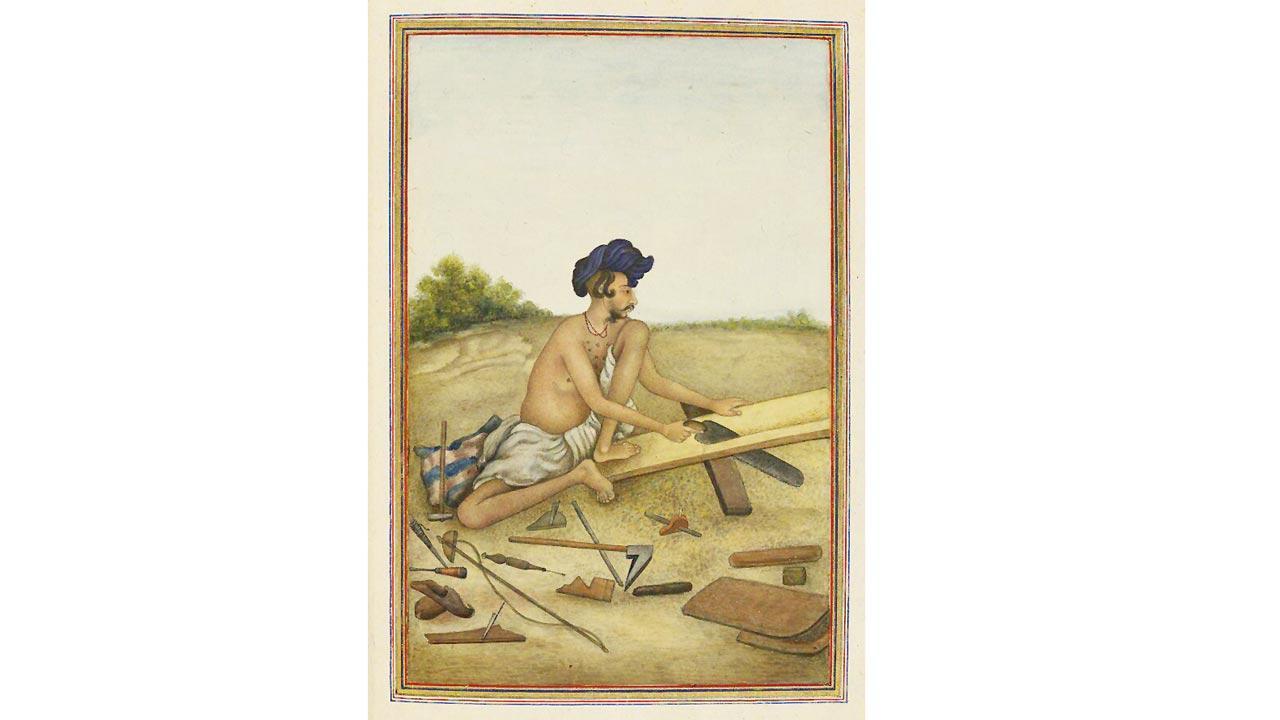Home / Mumbai-guide / Things To Do / Article /
Discover the intersection of Indian craftsmanship and sustainability
Updated On: 12 March, 2024 09:19 AM IST | Mumbai | Nandini Varma
This exciting new course dives into an evolving history of crafts in India, as we come closer to thinking about sustainability in today’s world

Tarkhan, carpenter caste of the Panjab (1825). Pic Courtesy/British Library
Dr Annapurna Garimella, art historian and designer, warns the participants before she begins her introductory lecture, “This is a history of crafts; this is not the history of crafts… It’s not so much a linear history but [moments] that come together to make a historical narrative.” The course she is talking about is MAP Academy’s new self-paced online course, A History of Indian Craft: 1850s to the Present, designed by her.
 Kasuti embroidery on a blouse. Picture Courtesy/Wikimedia Commons
Kasuti embroidery on a blouse. Picture Courtesy/Wikimedia Commons




